#archeology
Text
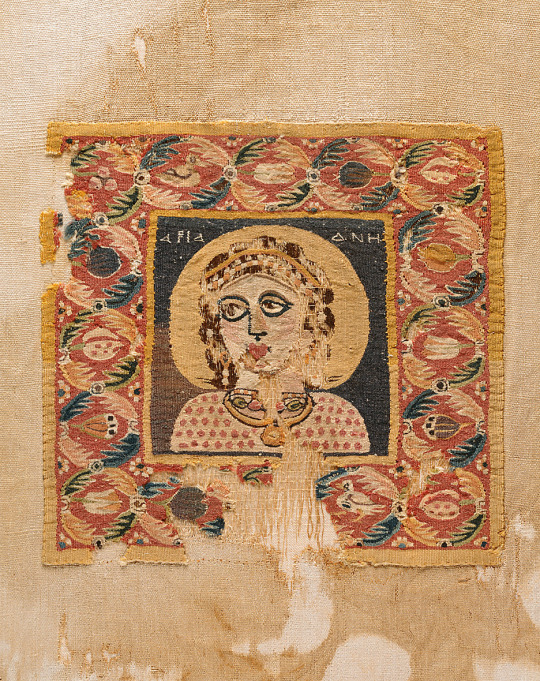

~ Ariadne and Dionysus.
Period: Late Roman/Late Antiquity
Date: A.D. 3rd-5th century
Place of origin: Achmim, Egypt
Medium: Wool on linen, colored knitting
#ancient#ancient art#history#museum#archeology#ancient history#archaeology#wool#ariadne#Dionysus#Achmim#Egyptian#Egypt#ancient egypt#3rd century#5th century
525 notes
·
View notes
Text
#dirkjake#thickthigssavelives#[text]#darren criss#nicola cavanis#alastor#archeology#2014 grunge#foot lover#jaimie alexander#orv#female led relationship#anthro art#sugar bae#bam margera
122 notes
·
View notes
Text
#mech#paris hilton#aron piper#Dwight Schrute#archeology#fine art#pompompurin#opal#lofi#lauren conrad#sophia loren#Guilty Gear#girls in yoga pants#rapper#birth
121 notes
·
View notes
Text
An exhibition at the British Museum promises to lift the lid on what beauty meant for the ancient Greeks.
45 notes
·
View notes
Text

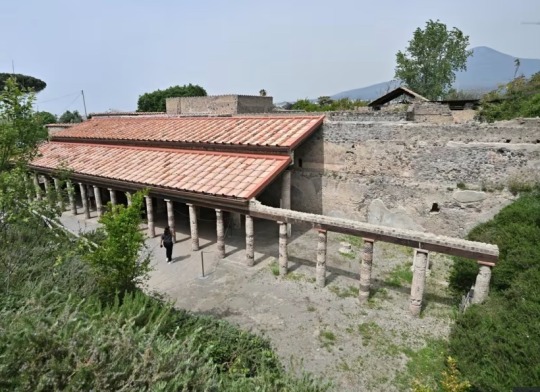
‘Ancient Roman’ Solar Roof Tiles Power Pompeii Villa
Ancient Roman ruins at Pompeii have been fitted with invisible solar panels, in a move that will contribute to the archaeological site’s sustainability efforts and cut costs. The innovative panels, which blend into the background by imitating traditional materials, were installed on the House of Cerere, on a thermopolium — a Roman snack bar — and on the House of the Vettii, which recently reopened following 20 years of restoration work.
“They look exactly like the terracotta tiles used by the Romans, but they produce the electricity that we need to light the frescoes,” said Gabriel Zuchtriegel, the director of the archaeological park of Pompeii, in a press release.
Each year, 3.5 million tourists explore the vast ruins of the ancient Roman city, which was buried by the eruption of Mount Vesuvius in 79 AD. But due to Pompeii’s size, energy bills are expensive and conventional methods of providing power across the site can threaten its appearance.

“Pompeii is an ancient city which in some spots is fully preserved,” Zuchtriegel said. “Since we needed an extensive lighting system, we could either keep consuming energy, leaving poles and cables around and disfiguring the landscape, or choose to respect it and save millions of euros.” The new technology will help the archaeological site to cut energy bills and make it more enjoyable, he added.
The invisible solar panels — or “traditional PV tiles” as they are technically known — were created by the Italian company Dyaqua. They can be designed to appear like stone, wood, concrete or brick, and hidden on walls, floors and roofs, according to Elisabetta Quagliato, whose family owns Dyaqua, in the press statement.
“We are an archaeological site but we also want to be a real-life lab for sustainability and the valorization of intangible heritage,” Zuchtriegel said. “Our initiative is not merely symbolic. Through the million tourists who visit us every year, we want to send a message to the world: cultural heritage can be managed differently and in a more sustainable way.”


Other locations in Italy using the invisible solar technology are the commune of Vicoforte in Italy and, soon, Rome’s contemporary art museum Maxxi. Public buildings in Evora, Portugal, and Split, Croatia will also install the panels, according to the press statement.
Pompeii’s recent use of these panels is just the beginning, Zuchtriegel said. “From now on, we will be taking this solution into account for all future renovation and restoration projects.”
By Garry Shaw.

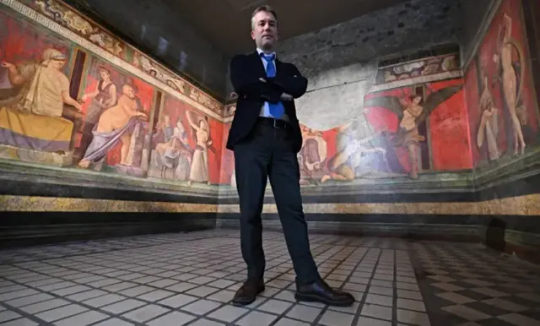
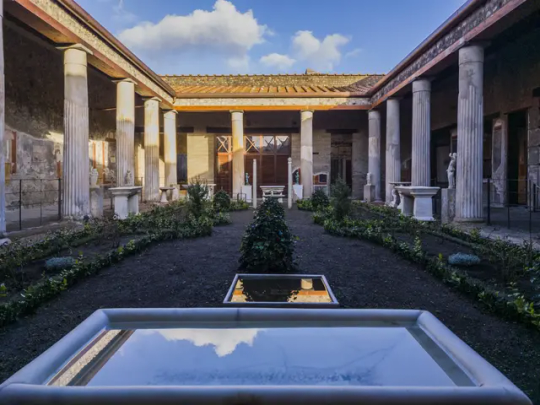
#‘Ancient Roman’ Solar Roof Tiles Power Pompeii Villa#House of Cerere#House of the Vettii#thermopolium#terracotta tiles#solar power#frescoes#mount vesuvius#ancient artifacts#archeology#archeolgst#history#history news#ancient history#ancient culture#ancient civilizations#roman history#roman empire#roman art
50 notes
·
View notes
Text
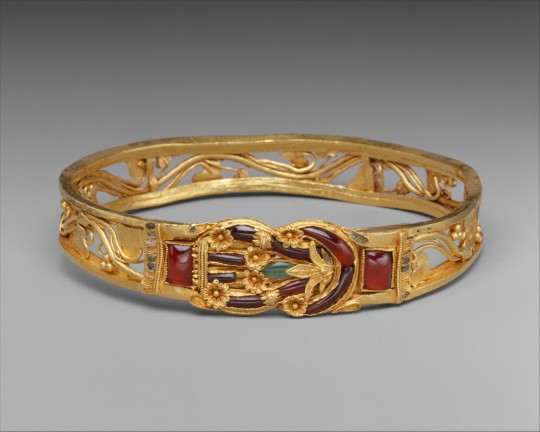
Gold armband with Herakles knot
Hellenistic period
3rd–2nd century BCE
Gold inlaid with garnets, emeralds, and enamel
3 1/2in. (8.9cm)
The Herakles knot on this sumptuous armband is enriched with floral decoration and inlaid with garnets, emeralds, and enamel. According to the Roman writer Pliny, the decorative device of the Herakles knot could cure wounds, and its popularity in Hellenistic jewelry suggests that it was thought to have the power to avert evil.
from The Metropolitan Museum of Art, New York
#greek art#hellenistic art#ancient artifacts#ancient art#antiquities#art history#archeology#hercules#carnelian#met museum#herakles
20 notes
·
View notes
Text
How am I supposed to pick just one area of study like
I want to work in the ocean
I want to work with animals
I want to study cool rocks like fuck!!!
Don’t even get me started on alchemy n magic!!
#studyblr#study#school#chaotic academia#dark academia#dark acamedia#college#career#marine biology#zoology#geology#archeology#alchemy#magic
20 notes
·
View notes
Text


#yemen#jerusalem#tel aviv#current events#palestine#free palestine#gaza#free gaza#news on gaza#palestine news#news update#war news#war on gaza#genocide#archeology#history
20K notes
·
View notes
Text
“A 16th c. Scottish Plaid was Found in a Bog–Now Becomes Oldest Historical Tartan Available to Wear Today”
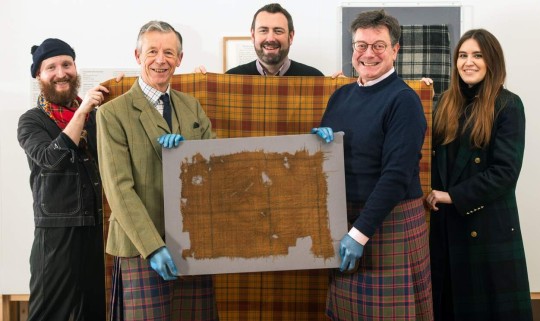
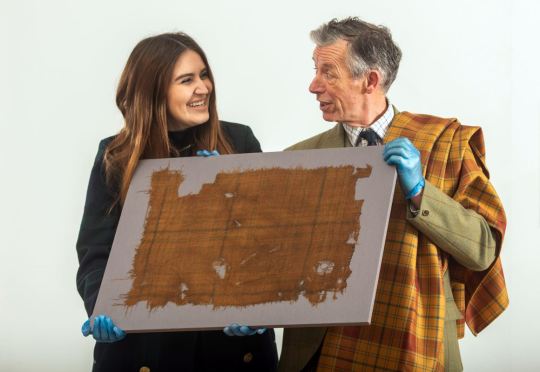
A textile manufacturer in Scotland has recreated the oldest-known piece of Scottish tartan ever found, which was buried for centuries.
Discovered approximately forty years ago in a peat bog, the Glen Affric Tartan underwent testing organized by The Scottish Tartans Authority last year to confirm it was the oldest surviving piece of tartan, dating back to between 1500-1600 CE.
15K notes
·
View notes
Text

2,300-Year-Old Plush Bird from the Altai Mountains of Siberia (c.400-300 BCE): crafted with a felt body and reindeer-fur stuffing, all of which remains intact
This artifact was sealed within the frozen barrows of Pazyryk, Siberia, for more than two millennia, where a unique microclimate enabled it to be preserved. The permafrost ice lense formation that runs below the barrows provided an insulating layer, preventing the soil from heating during the summer and allowing it to quickly freeze during the winter; these conditions produced a separate microclimate within the stone walls of the barrows themselves, thereby aiding in the preservation of the artifacts inside.
This is just one of the many well-preserved artifacts that have been found at Pazyryk. These artifacts are attributed to the Scythian/Altaic cultures.
Currently housed at the Hermitage Museum.
#archaeology#anthropology#history#artifact#artifacts#siberia#scythians#archeology#museum#amazing#interesting#stuffed animals#ancient history#prehistoric#crafting#felt art#art#prehistoric art#hermitage museum#human nature
45K notes
·
View notes
Text
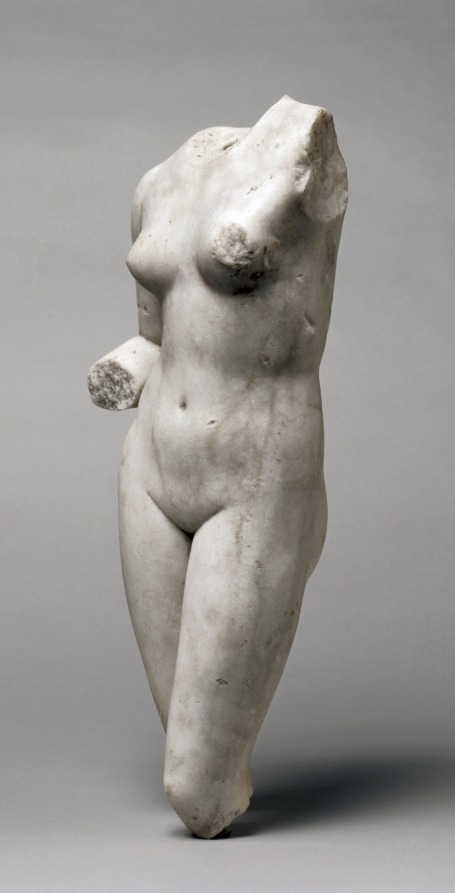

~ Torso of Venus.
Date: A.D. 1–200
Culture: Roman
Marble: Marble
#ancient#ancient art#history#museum#archeology#ancient sculpture#roman#ancient history#archaeology#ancient rome#roman empire#torso of venus#venus#marble#1st century#3rd century
327 notes
·
View notes
Text

The fossil of a 20cm baby crocodile from Germany.
#fossils#archeology#naturalhistory#paleontology#nature#photography#paleontography#animals#cute animals#crocodile#reptile
20K notes
·
View notes
Text

The ancient theatre of Epidavros, Peloponnese, Greece. 4th c.BC.
8K notes
·
View notes
Text
The Hand of Hercules is the name given to a massive fragment of an ancient statue that was unearthed by archaeologists in Amman, the capital of Jordan.
20 notes
·
View notes
Text


George Washington's 250-Year-Old Cherries Found Buried at Mount Vernon
Archaeologists found something incredibly rare in the cellar of George Washington's home at Mount Vernon: Two intact jars of cherries buried in the basement of the first U.S. president's house.
Nick Beard, project archeologist at Mount Vernon, said on Tuesday that he had been excavating the basement "for quite a while" when he saw the lip of one of the jars in November.
When the bottle started to peek out from the earth, he proceeded carefully but said he didn't think it would turn out to be anything out of the ordinary, adding that it's common to find wine bottles and glasses at the site about 15 miles south of Washington, D.C.
In fact, Beard stepped away from the bottles to help on a more immediate project. Only when he returned several weeks later did he realize what he discovered.
As he worked, more and more glass became exposed. He tried to wiggle the glass out of its resting place, but when he did his fingers got a little wet.
That's when he noticed whatever he was working on was full of liquid.
"Which means if it's that full of liquid then it has to be intact enough to hold that liquid," said Beard. "That's not common, so that immediately got me excited."
Uncovered jars reveal centuries-old cherries
When Beard further revealed the jars, he called other archeologists to come check his findings.
The jars were fully excavated on March 22. The cherries were removed from the bottles to help preserve the glass, but after April 30, the glass will be sent off for conservation. Its contents will be sent to a lab for analysis and be tested in a controlled environment by specialists, according to a press release from Mount Vernon.
"It's extraordinary," Jason Boroughs, principal archaeologist at Mount Vernon, saying something similar has only happened twice in Virginia in the past six decades:
The latest discovery is a part of the privately funded $40 million Mansion Revitalization Project at Mount Vernon.

What was in the jar?
Beard and Boroughs said that cherries and a mystery liquid were found in the jar. And the cherries, Boroughs said, actually look like cherries, even after hundreds of years.
"They're plump, they have flesh, they have pits and stems," Boroughs said. "They don't look as if they've been sitting in a bottle for 250 years, although they have."
The liquid inside even smelled like cherry blossoms, according to Mount Vernon.
The cherries in the bottles were probably dry when they were buried, Boroughs said.

While the archeologists know what the cherries are, the liquid is still a bit of a mystery.
Lily Carhart, curator of the preservation collections at Mount Vernon, said it's possible the groundwater got into the bottle after the cork that sealed it deteriorated.
The liquid still needs to be tested, Boroughs said. And there is a small possibility it could've been a type of alcohol, like a brandy or cognac.
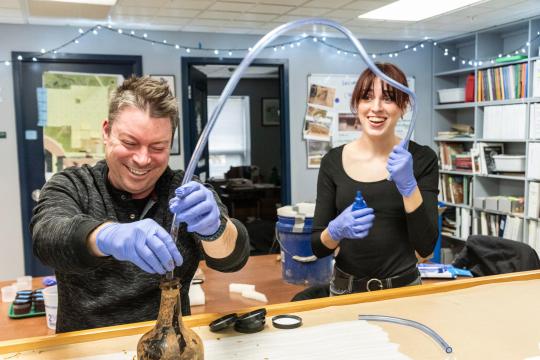

Why were the cherries buried?
Enslaved laborers picked the cherries, wiped them off to avoid condensation and placed them into the jar. Then, that jar was corked and buried sometime between 1758 and 1776, when both George and Martha Washington were living at the home, according to Boroughs.
He added that the method would've kept the fruit inside the bottle preserved for up to a year. It was one of the most popular ways to preserve berries and its how folks in colonial America preserved food before there were refrigerators.
"It pretty much keeps them isolated and sealed from the atmosphere, from air and from fungus and other things that could attack" he said.
According to Boroughs, the cherries were supposed to be served on George Washington's dinner table, but instead were forgotten and buried under a brick floor that was placed in the 1770s, sealing its fate as a sort of a "time capsule."



Can you still eat the cherries?
"You would not want to put that close to your face," Carhart said about the cherries.
Boroughs said that it could actually be possible to eat them, but "nobody wants to try."
Why is this discovery significant?
Boroughs said the discovery is remarkable because he "can't count the number of times 18th-century food remains have been found intact" the way the cherries were.
"We're the first people to touch these objects since they were put in the ground by an enslaved person," Boroughs said.
While the discovery itself is incredible, the archeologist said the stories that can be uncovered from it are just as amazing.
"We think of these items sort of as the material bits of lives that we can recover from the ground," Boroughs said. "These bottles tell stories. They're attached to people who had real lives and if we know how to put the pieces together, we can piece together something about their lives."
Beard added that it feels "surreal" to have such an "immediate connection with the people that lived back then."
By Julia Gomez.



#George Washington's 250-Year-Old Cherries Found Buried at Mount Vernon#Mount Vernon#George Washington#ancient artifacts#archeology#archeolgst#history#history news
25 notes
·
View notes
Text
Paleontologist: I became a paleontologist because dinosaurs are cool
Astronomer: I became an astronomer because space is cool
Chemist: I became a chemist because explosions are cool
Archeologist: I became an archeologist because Indiana Jones is cool
Mycologist: I. Fucking. LOVE. Mushrooms.
Paleontologist: Uh…
Mycologist: IWillLiterallyMurderYouJustSoICanWatchFungiBreakDownYourDecayingRemainsDon’tTestMeBoneBoy
#Science#Mycology#Chemistry#biology#Paleontology#scientists sitcom#scientists specializing in their obscure special interest is my favorite gender#I am one of those#Astronomy#Archeology
4K notes
·
View notes